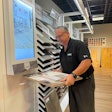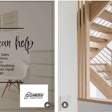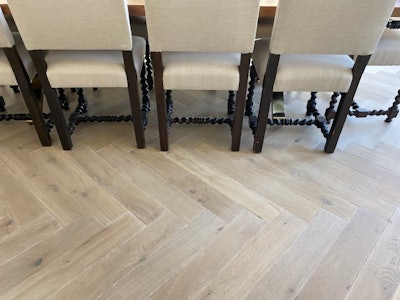
When I started my boutique retail flooring company in 2013, a designer in one of my networking groups said, “Hey Rose, we have a new development that is starting, and they’re looking for reclaimed wood.
Can you send that?” And of course my answer is always, “Yes!” I didn’t know at the time that the projects in that large development would keep me busy for a decade and help me grow and improve my business and my craft immeasurably.
The developers ended up building 200 homes. I provided the flooring material and design for over 60 of them, completing my last home in December 2022. Here’s what I learned along the way.
I had to be unique to compete
As I began meeting with clients, I kept thinking, with 200 homes, how can I make each one different? My goal was to compete with big companies who were campaigning for this project. In order for clients to come to me, I needed to be unique. And the uniqueness I brought to the table was the ability to offer different patterns and designs for each client. I am French, and what came to mind was the beautiful apartments in Paris that have chevron floors. A friend and former client, Nico Sauzier, is a CAD designer. He’s also French, so we relate to parquet design, and we decided that for each of the clients we would partner to create a custom flooring design for their home.
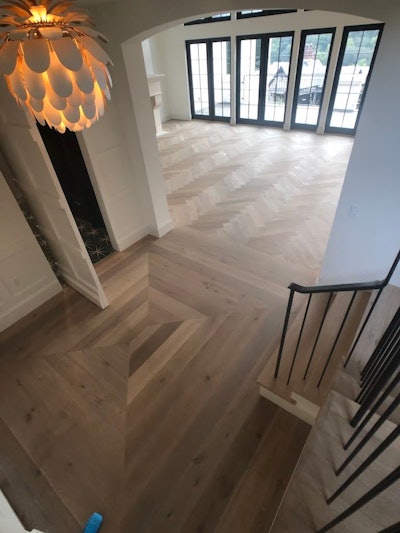
Many homeowners in the development were moving together from the San Francisco Bay area, and often they said, “I want the same floor as my friend.” I would have to stop them and say, “No, because you are different!” Then I would guide them and we would come up with a beautiful design. It was good I did that, because every Christmas the neighbors would visit each other’s houses, and I was so glad they never had to say, “Oh, we have the same parquet.” This process also helped me build relationships with each client and generate a strong string of referrals. People buying into the development would tell their neighbors and friends, “Go see Rose.”
Staying organized was key
It worked like this: After I reached out to the client, they would come to the showroom and, after asking what they were looking for, we would select from the showroom. They would come with cabinets, stone, etc., and I would guide them to the right flooring to complement their home. Because of the timelines on this project, all the flooring we used was prefinished.
We were able to stay organized because the builder was also very organized. As soon as the client selected their flooring, the builder was able to have the owner sign off on the drawings. Then that project wouldn’t actually happen for another year.

Seven or eight months before the site was ready for us, I would make sure the material was available. I used different project management programs, like Asana, to organize all the clients’ names and to get a notice to check in about what stage the project was at exactly six months ahead of installation. Because they were all in the same area, I was able to easily go from one lot to another to check on the home’s progress myself on my way into the office.
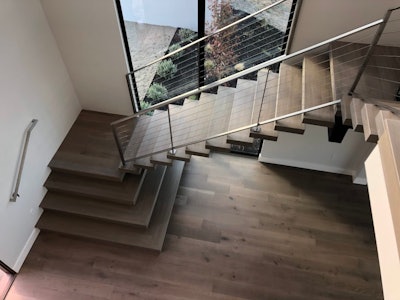
My company doesn’t do installation, but I always want the best crew for my projects. So when they were asking us to do two or three jobs at the same time, the only way to manage it was to get one crew to do prep work on one job while the other was doing the installation on another. We broke each job down so we could make sure that by the time they were ready for installation we would have the right crew that could jump in.
Maintaining a teamwork mentality
Everything came together through teamwork, little by little. I’m the sole owner of my business, and I’m very hands-on. Contractors can be tough, and I was the woman jumping in and saying “No, this is not flat,” or this or that. But by the end of the project, I became close with those contractors because of going through the challenges together. Nothing unites a team like trying to wrap up a tricky project late on a Friday when the keys are due Monday. Luckily I always had an amazing team, and Nico, the flooring contractor and I would always triple-check each other’s work.
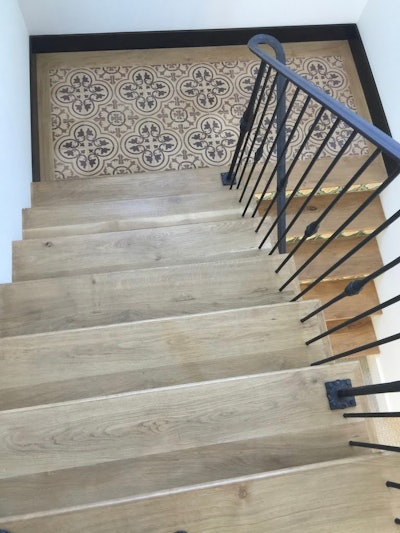
This project really helped me gain more experience. I was learning every day, and if I did not have the answer, I would get it through the NWFA or from a professional. There were always questions and a lot of research and brainstorming, and doing that showed the client we were flooring specialists. We don’t just do the basics of selling the product—we go to the end to make sure the final product is what it should be.
 Me in 2013, before the development began.
Me in 2013, before the development began.
 The development—now filled with homes—as it neared completion.
The development—now filled with homes—as it neared completion.




























